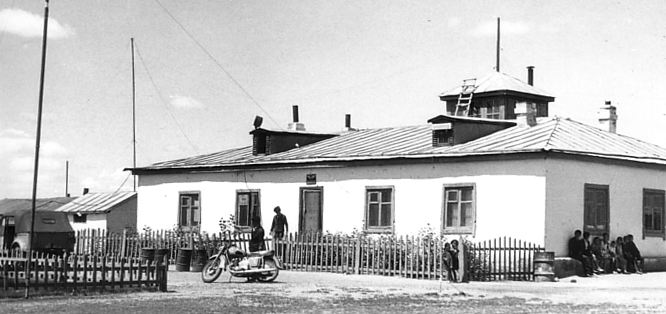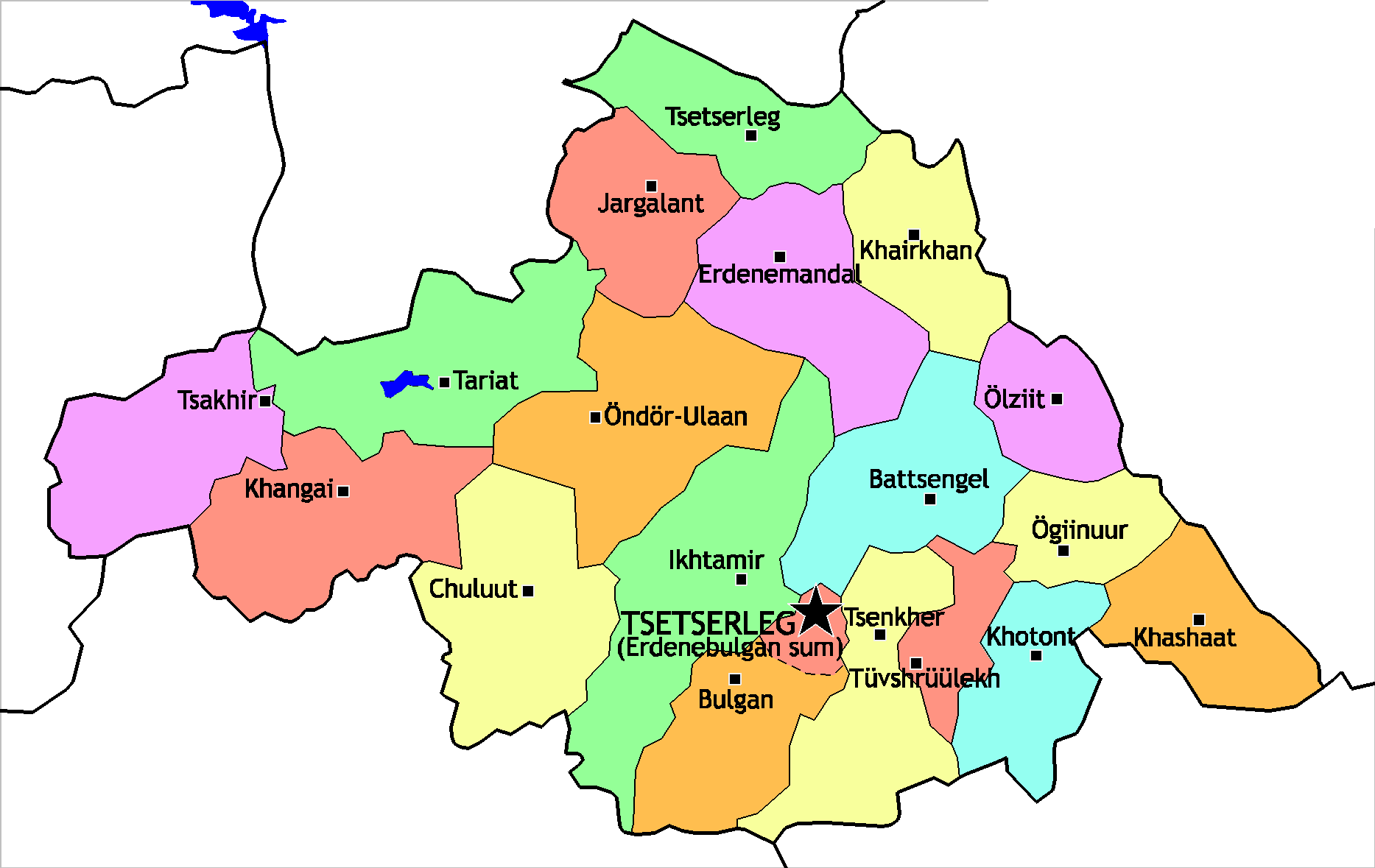|
Baruun-Urt
Baruun-Urt ( mn, Баруун-Урт; , ''west-long'') is a town in eastern Mongolia and the capital of Sükhbaatar Province. The town with its vicinities creates a sum (district) of Sükhbaatar Province. The Baruun-Urt sum area is 59 km², population 15,549, population density 265 per km² (2008). It forms an enclave within the surrounding Sükhbaatar sum. Tömörtiin Ovoo Zinc Mine lies about 13 km north of the town. Population Transportation The Baruun-Urt Airport (UUN/ZMBU) has paved runway and cars There is a charter flight connecting the city to the capital when there are passengers. Usually MIAT, Mongolian Airlines doesn't fly to remote provinces especially to Sukhbaatar province but other two local airlines sometimes do. Recently some small airlines which has up to 8 seats started flying to suburban areas. Climate Baruun-Urt experiences a cold semi-arid climate (Köppen Köppen is a German surname. Notable people with the surname include: * Bernd Köp ... [...More Info...] [...Related Items...] OR: [Wikipedia] [Google] [Baidu] |
Sükhbaatar Province
Sükhbaatar ( mn, Сүхбаатар) is one of the 21 aimags of Mongolia, located in the east of the country. Its capital is Baruun-Urt. It is named after Damdin Sükhbaatar. Population Transportation The Baruun-Urt Airport (UUN/ZMBU) has one unpaved runway and is served by regular flights to Ulaanbaatar. Administrative subdivisions The Aimag capital Baruun-Urt is geographically located within the Sükhbaatar, Sükhbaatar, Sükhbaatar sum, but administrated independently. * - the aimag capital Baruun-Urt See also *Dariganga_Mongols References Sükhbaatar Province, Provinces of Mongolia States and territories established in 1942 1942 establishments in Mongolia {{Mongolia-geo-stub ... [...More Info...] [...Related Items...] OR: [Wikipedia] [Google] [Baidu] |
Baruun-Urt Airport
Baruun-Urt Airport is a public airport located in Baruun-Urt, the capital of Sükhbaatar Province in Mongolia. See also * List of airports in Mongolia * List of airlines of Mongolia This is a list of airlines which have a current air operator's certificate issued by the Civil Aviation Authority of Mongolia ( mn, Иргэний Нисэхийн Ерөнхий Газар). Scheduled airlines Charter airlines Cargo airlines ... References External links World aero dataBaruun-Urt Airports in Mongolia {{Mongolia-airport-stub ... [...More Info...] [...Related Items...] OR: [Wikipedia] [Google] [Baidu] |
Districts Of Mongolia
A district ( mn, сум, , , ; "arrow"), is a second level administrative subdivision of Mongolia. The 21 Provinces of Mongolia are divided into 331 districts.Montsame News Agency. ''Mongolia''. 2006, Foreign Service office of Montsame News Agency, , p. 46 On average, each district administers a territory of with about 5,000 inhabitants, primarily nomadic herders. Its total revenue is 120 million Mongolian tögrög, Tögrög, 90% of which comes from national subsidies. Each district is again subdivided into ''bags'' (brigades; sometimes spelled ''baghs''). Most bags are of an entirely virtual nature. Their purpose is to sort the families of nomads in the district into groups, without a permanent human settlement. Officially, and occasionally on maps, many district seats (sum centers) bear a name different from that of the district. However, in practice the district seat (sum center) is most often referred to under the name of the district, to the point of the official name ... [...More Info...] [...Related Items...] OR: [Wikipedia] [Google] [Baidu] |
Mongolia
Mongolia; Mongolian script: , , ; lit. "Mongol Nation" or "State of Mongolia" () is a landlocked country in East Asia, bordered by Russia to the north and China to the south. It covers an area of , with a population of just 3.3 million, making it the world's most sparsely populated sovereign nation. Mongolia is the world's largest landlocked country that does not border a closed sea, and much of its area is covered by grassy steppe, with mountains to the north and west and the Gobi Desert to the south. Ulaanbaatar, the capital and largest city, is home to roughly half of the country's population. The territory of modern-day Mongolia has been ruled by various nomadic empires, including the Xiongnu, the Xianbei, the Rouran, the First Turkic Khaganate, and others. In 1206, Genghis Khan founded the Mongol Empire, which became the largest contiguous land empire in history. His grandson Kublai Khan conquered China proper and established the Yuan dynasty. After the c ... [...More Info...] [...Related Items...] OR: [Wikipedia] [Google] [Baidu] |
Sums Of Mongolia
A district ( mn, сум, , , ; "arrow"), is a second level administrative subdivision of Mongolia. The 21 Provinces of Mongolia are divided into 331 districts.Montsame News Agency. ''Mongolia''. 2006, Foreign Service office of Montsame News Agency, , p. 46 On average, each district administers a territory of with about 5,000 inhabitants, primarily nomadic herders. Its total revenue is 120 million Tögrög, 90% of which comes from national subsidies. Each district is again subdivided into ''bags'' (brigades; sometimes spelled ''baghs''). Most bags are of an entirely virtual nature. Their purpose is to sort the families of nomads in the district into groups, without a permanent human settlement. Officially, and occasionally on maps, many district seats (sum centers) bear a name different from that of the district. However, in practice the district seat (sum center) is most often referred to under the name of the district, to the point of the official name of the district sea ... [...More Info...] [...Related Items...] OR: [Wikipedia] [Google] [Baidu] |
Sükhbaatar, Sükhbaatar
Sükhbaatar ( mn, Сүхбаатар) is a sum (district) of Sükhbaatar Province in eastern Mongolia. The Tömörtiin Ovoo Zinc Mine is 40 km west of the sum center. In 2009, its population was 3,197.Sükhbaatar Aimag Annual Statistical Report 2009 The Sükhbaatar Province
Sükhbaatar ( mn, Сүхбаатар) is one of the 21 aimags of Mongolia, located in the east of the country. Its capital is Baruun-Urt. It is named after Damdin Sükhbaatar.
Population
Transportation
The Baruun-Urt Airport (UUN/ZMBU) has ... capital of [...More Info...] [...Related Items...] OR: [Wikipedia] [Google] [Baidu] |
Tömörtiin Ovoo Zinc Mine
The Tömörtiin Ovoo Zinc Mine ( mn, Төмөртийн овоо, ''heap of iron'') is a mining and dressing plant in the Sükhbaatar, Sükhbaatar, Sükhbaatar Sums of Mongolia, sum (district) of Sükhbaatar Province in eastern Mongolia. This mine is 40 km W from the sum center and 13 km N from the province capital Baruun-Urt. It was officially put into production on August 28, 2005, with 300,000 tons ore dressed and 80,000 tons zinc concentrate produced per year. Zinc concentrate is transported from the mining site to the transfer railway station Sainshand and exported via the Trans-Mongolian Railway. It was calculated in 1980 that the deposit possesses 70,572,290 tons of ore with an average grade of 13.67% of zinc by B+C reserve category which is equivalent to 1,034,860 tons of metallic zinc. In 1997 the Mongolian company Metallimpex LLC and China-based NFC entered into a Cooperation Agreement to jointly mine the deposit and established Tsairt Mineral LLC, a Mongol-Chi ... [...More Info...] [...Related Items...] OR: [Wikipedia] [Google] [Baidu] |
Countries Of The World
The following is a list providing an overview of sovereign states around the world with information on their status and recognition of their sovereignty. The 206 listed states can be divided into three categories based on membership within the United Nations System: 193 UN member states, 2 UN General Assembly non-member observer states, and 11 other states. The ''sovereignty dispute'' column indicates states having undisputed sovereignty (188 states, of which there are 187 UN member states and 1 UN General Assembly non-member observer state), states having disputed sovereignty (16 states, of which there are 6 UN member states, 1 UN General Assembly non-member observer state, and 9 de facto states), and states having a special political status (2 states, both in free association with New Zealand). Compiling a list such as this can be a complicated and controversial process, as there is no definition that is binding on all the members of the community of nations conc ... [...More Info...] [...Related Items...] OR: [Wikipedia] [Google] [Baidu] |
Provinces Of Mongolia
A province is almost always an administrative division within a country or state. The term derives from the ancient Roman '' provincia'', which was the major territorial and administrative unit of the Roman Empire's territorial possessions outside Italy. The term ''province'' has since been adopted by many countries. In some countries with no actual provinces, "the provinces" is a metaphorical term meaning "outside the capital city". While some provinces were produced artificially by colonial powers, others were formed around local groups with their own ethnic identities. Many have their own powers independent of central or federal authority, especially in Canada and Pakistan. In other countries, like China or France, provinces are the creation of central government, with very little autonomy. Etymology The English word ''province'' is attested since about 1330 and derives from the 13th-century Old French , which itself comes from the Latin word , which referred to the sphe ... [...More Info...] [...Related Items...] OR: [Wikipedia] [Google] [Baidu] |
Köppen Climate Classification
The Köppen climate classification is one of the most widely used climate classification systems. It was first published by German-Russian climatologist Wladimir Köppen (1846–1940) in 1884, with several later modifications by Köppen, notably in 1918 and 1936. Later, the climatologist Rudolf Geiger (1894–1981) introduced some changes to the classification system, which is thus sometimes called the Köppen–Geiger climate classification system. The Köppen climate classification divides climates into five main climate groups, with each group being divided based on seasonal precipitation and temperature patterns. The five main groups are ''A'' (tropical), ''B'' (arid), ''C'' (temperate), ''D'' (continental), and ''E'' (polar). Each group and subgroup is represented by a letter. All climates are assigned a main group (the first letter). All climates except for those in the ''E'' group are assigned a seasonal precipitation subgroup (the second letter). For example, ''Af'' i ... [...More Info...] [...Related Items...] OR: [Wikipedia] [Google] [Baidu] |
Semi-arid Climate
A semi-arid climate, semi-desert climate, or steppe climate is a dry climate sub-type. It is located on regions that receive precipitation below potential evapotranspiration, but not as low as a desert climate. There are different kinds of semi-arid climates, depending on variables such as temperature, and they give rise to different biomes. Defining attributes of semi-arid climates A more precise definition is given by the Köppen climate classification, which treats steppe climates (''BSk'' and ''BSh'') as intermediates between desert climates (BW) and humid climates (A, C, D) in ecological characteristics and agricultural potential. Semi-arid climates tend to support short, thorny or scrubby vegetation and are usually dominated by either grasses or shrubs as it usually can't support forests. To determine if a location has a semi-arid climate, the precipitation threshold must first be determined. The method used to find the precipitation threshold (in millimeters): *multip ... [...More Info...] [...Related Items...] OR: [Wikipedia] [Google] [Baidu] |
National Oceanic And Atmospheric Administration
The National Oceanic and Atmospheric Administration (abbreviated as NOAA ) is an United States scientific and regulatory agency within the United States Department of Commerce that forecasts weather, monitors oceanic and atmospheric conditions, charts the seas, conducts deep sea exploration, and manages fishing and protection of marine mammals and endangered species in the U.S. exclusive economic zone. Purpose and function NOAA's specific roles include: * ''Supplying Environmental Information Products''. NOAA supplies to its customers and partners information pertaining to the state of the oceans and the atmosphere, such as weather warnings and forecasts via the National Weather Service. NOAA's information services extend as well to climate, ecosystems, and commerce. * ''Providing Environmental Stewardship Services''. NOAA is a steward of U.S. coastal and marine environments. In coordination with federal, state, local, tribal and international authorities, NOAA manages the ... [...More Info...] [...Related Items...] OR: [Wikipedia] [Google] [Baidu] |







